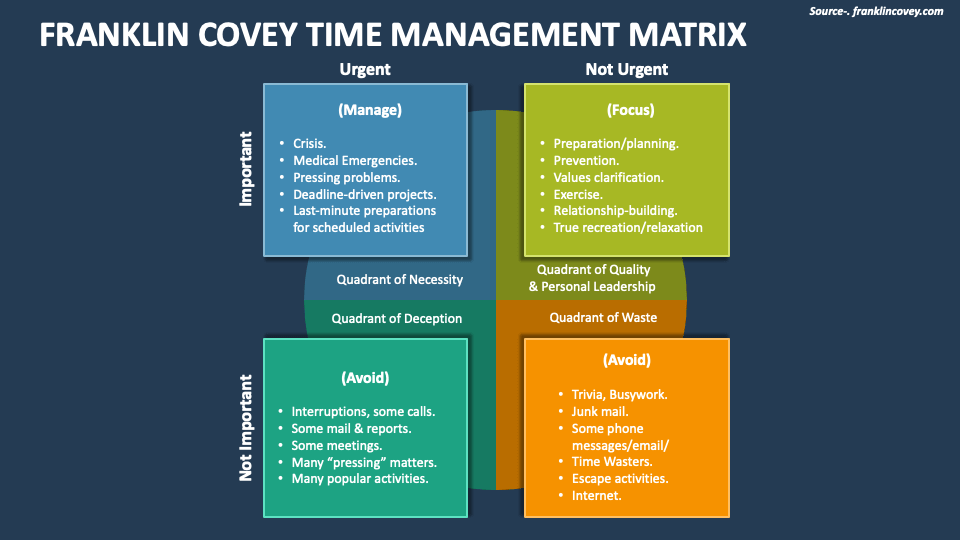A survey completed by Inc.com found that of the surveyed business owners and their key decision makers, they spent 30% of their work week on time wasting and low or little value tasks. Tasks that could have been delegated and handled for them.
Using a system like the Time Management Covey Management Matrix on a daily basis could help make days more productive.
What is the Time Management Covey Matrix?
The Covey Time Management Matrix is an effective method meant to focus attention on tasks that most matter to your business and personal growth. When The Covey Time Management Matrix is used right it can optimise efficiency and productivity. This matrix model was created by Steve Covey, renowned author of “The Seven Habits of Highly Effective People.”
The four quadrant system helps to categorise each task and responsibility based on their urgency and importance.
The Four Quadrants Broken Down

Quadrant 1: Urgent and important
In this quadrant, you’ll find tasks and activities demanding immediate attention. Q1 is solely dedicated to handling emergencies and meeting critical deadlines.
For instance:
- Crisis management
- Projects with impending deadlines
- Making crucial decisions
Quadrant 2: Not Urgent but Important
Q2 comprises tasks that are less time-sensitive but hold significant long-term importance. Investing time in these tasks is essential as they directly contribute to achieving goals.
For example:
- Strategic planning
- Preparing for future endeavors
Quadrant 3: Urgent but Not Important
Activities in Q3 may appear urgent but lack true importance in the grand scheme of things. It’s best to remove or minimize these tasks to maintain productivity.
For example:
- Interruptions that disrupt workflow
- Engaging in small talk that hinders productivity
- Attending meetings that could have been addressed through emails
Quadrant 4: Not Urgent and Not Important
Lastly, Q4 encompasses tasks that consume time but don’t yield valuable results. Avoiding or minimising engagement in these activities is crucial to avoid wasting time.
For example:
- Spending hours watching TV
- Excessive use of social media during the day
So how does the Matrix benefit the working professional? Prioritising tasks increases workflow productivity. Identifying the quadrant 1 and quadrant 2 tasks allows the user to allocate the right time and energy on the more valuable, urgent and important tasks.
Likewise, with quadrant 3 and quadrant 4, it is easier to visualise the tasks that are time wasters, and interrupt productivity.
Another benefit is the ability to build good timing keeping habits and creating this quick quad matrix on a daily basis helps create a visual representation of how daily tasks should be managed.
From a project managers perspective, identifying quad 1 and quad 2 allows the manager to visualise his/her week and delegate tasks throughout the team. And tasks that need full attention can be given the energy they need.
Once tasks are categorised through the matrix, utilising supportive tools like time management software can work hand in hand. The use of time management software’s benefits each member of the company. It allows efficiency throughout all tasks, of varied importance. Making the allocated time for the most important and urgent tasks through a structured system has a positive effect on productivity.
The 1Time system provides the all important project planning, and task planning tools needed to run a business, or for employees to get structured tasks. The system is a great tool that can assist with the important time management skill.
Sign up for the free 30day trial, and see how 1Time can help create a smarter work schedule.









